Inflight Magazine of Brussels Airlines
Welcome to the Inflight Magazine of Brussels Airlines
Vroom with a view
James Kevin Mac Goris hops on a Vespa to explore Umbria, one of Italy’s most bewitching regions
 Being cool in Italy is child’s play. In a country where even police officers’ uniforms are so chic they make you feel badly dressed, there’s one story the Italians are so in love with, it even temporarily gives you a passaporto della repubblica. Think La Dolce Vita, think Roman Holiday… think Vespa.
Being cool in Italy is child’s play. In a country where even police officers’ uniforms are so chic they make you feel badly dressed, there’s one story the Italians are so in love with, it even temporarily gives you a passaporto della repubblica. Think La Dolce Vita, think Roman Holiday… think Vespa.
Making friends when you’re on a Vespa is easy – you simply buzz around like a great big retro fly and, instead of showing clenched fists and hurling insults, people smile and wave at you.
Take my recent experience on a two-wheeler discovery tour of Umbria. Generally speaking, fetching up with your girl at the local village petrol pump (one that often doubles as the village café) on shiny new scooters isn’t the best way to arrive incognito. Here, it gives you great cred with the locals.
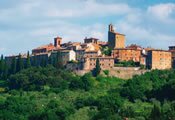 Gnarled old men gather around, firing questions in Italian while eyeing up your scooter and girlfriend in equally covetous measure. You feel they’re about to make you an offer which, not speaking much Italian, you won’t be in a position to negotiate (a relief, as it spares you the embarrassment of a difficult decision). Tanks filled, you hop on and fire up, your last backward glance catching the men nodding and winking to each other as though placing bets on exactly what the pair of you will get up to once you’re over the brow of that impossibly beautiful hill in front.
Gnarled old men gather around, firing questions in Italian while eyeing up your scooter and girlfriend in equally covetous measure. You feel they’re about to make you an offer which, not speaking much Italian, you won’t be in a position to negotiate (a relief, as it spares you the embarrassment of a difficult decision). Tanks filled, you hop on and fire up, your last backward glance catching the men nodding and winking to each other as though placing bets on exactly what the pair of you will get up to once you’re over the brow of that impossibly beautiful hill in front.
But beyond that beautiful hill is another, and then another… this time crowned by a picturesque medieval town. Umbria and neighbouring Tuscany are particularly good at these extraordinary testaments to human ingenuity and perseverance. In most countries, the towns are situated in valleys next to a river. After all, it makes sense if you want water or you need to send things around the country
– rivers are the lifeblood of cities. Not so in central Italy. Here the towns, which bear names familiar to any epicurean (Montepulciano, Orvieto, Montefalco), were built on top of hills that give them commanding views of the surrounding countryside. Vines are one of the keys here – they need slopes and in this part of Italy they’re what make the walled hilltop towns famous. Of course, the other advantage of being so high is being able to see your enemy from the hilltop across the way coming.
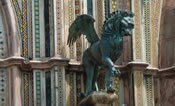 Fast-forward seven centuries or so, rev up an Italian style icon and these couple of thousand square kilometres of history become an absolutely priceless holiday. Five days on a scooter in May? Give me five weeks. No, make that five months. This is paradise.
Fast-forward seven centuries or so, rev up an Italian style icon and these couple of thousand square kilometres of history become an absolutely priceless holiday. Five days on a scooter in May? Give me five weeks. No, make that five months. This is paradise.
We were based at Hotel Vannucci (hotel-vannucci.com), a restored villa originally given by Vittorio Emanuele II to one of his many daughters, in Città della Pieve.
This Umbrian walled city has to be one of the most beautiful spots in Italy, right in the middle of one of the country’s most beautiful regions. While Tuscany boasts the big hitters in terms of drawing power, Umbria is a less travelled place and the locals are correspondingly more indulgent with tourists asking stupid questions, not understanding Italian and generally behaving ineptly.
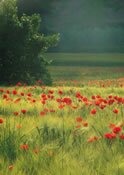 On a typical day, we set out at around 9.30am after a leisurely breakfast and followed one of the itineraries provided by Kalitumba Travel (kalitumbatravel. com), which specialises in Vespa tours. The guides aren’t compulsory, but they’ve been put together in painstaking detail and include plenty of excellent advice on where to go, what to see and what to eat, so are worth following at least part of the time.
On a typical day, we set out at around 9.30am after a leisurely breakfast and followed one of the itineraries provided by Kalitumba Travel (kalitumbatravel. com), which specialises in Vespa tours. The guides aren’t compulsory, but they’ve been put together in painstaking detail and include plenty of excellent advice on where to go, what to see and what to eat, so are worth following at least part of the time.
Buzzing through woods, alongside fields of vines and olives, and up and down sun-drenched hills covered in poppies is by no means a disagreeable way to get to lunch. If you follow the guide, you’ll have a basic idea of where you’re going; if you don’t, discovering the rambling narrow streets of a walled medieval town or the magnificent rolling countryside on your own is as much fun. About 25km from Città della Pieve, for example, we stopped in Panicale to look at a recommended fresco by Il Perugino in the town’s church. We had the place to ourselves in the warm spring sunshine. After the inviting coolness of the semi-obscure church, we followed our own noses towards lunch. Shortly afterwards – and utterly unaided – we came across a fantastic local restaurant, where we had a delicious meal of pasta with truffles, salad, guinea fowl and a glass or two of excellent Umbrian wine followed by coffee, all for about €15 each.
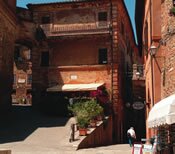 A bargain – and not the only one we discovered. Later, following the shore road around Lake Trasimeno, we had the best treat of all – an unbelievably romantic sunset over the lake and hills, which took our breath away.
A bargain – and not the only one we discovered. Later, following the shore road around Lake Trasimeno, we had the best treat of all – an unbelievably romantic sunset over the lake and hills, which took our breath away.
Both the locals and other Italians who’ve moved here from other parts of Italy are extraordinarily friendly and informative about the region. One chap I met was a former marketing executive for an Italian multinational. He’d found his calling in Città della Pieve tending a small shop that sells beautiful hand-woven and hand-dyed linen and other artisanal items. “My friends from Rome call me up and say they’re coming for the weekend and I say: ‘Don’t!’” he laughs. “No, seriously, I love them to come. But I want them to leave their stressed city attitude behind.”
When we told him we were there on two wheels, he enthusiastically misunderstood that we’d come all the way from Belgium on our Vespas. “I had dinner just yesterday with the president of Piaggio,” he said with typical Italian modesty. “Just wait until I tell him – he’ll give you a medal!”
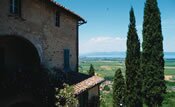 Another recent arrival is Orlando, the manager of Hotel Vannucci, fresh from a 10-year stint at top Italian and metropolitan restaurants in London.
Another recent arrival is Orlando, the manager of Hotel Vannucci, fresh from a 10-year stint at top Italian and metropolitan restaurants in London.
He explained how the current owner, an American businesswoman based in London, ended up buying the hotel from the widow of the previous owner when it became clear she was finding it impossible to keep the place up on her own. This was no corporate takeover, though – the new owner had often stayed as a guest while renovating her own property nearby, and by buying Hotel Vannucci she was simply doing her part to ensure the survival of an integral piece of the region’s history.
FR Dolce Vespa
Avec une Vespa, se faire des amis en Italie est la simplicité même – il suffit que vous tourniez en rond comme une grande abeille et au lieu de déclencher des proférations d’injures et des haussements de poings, les gens vous sourient et vous font des signes bienveillants. Lors d’un récent circuit découverte en Ombrie, j’ai pu apprécier à quel point ce scooter me rapprochait des natifs. Tout d’abord, vous voyez leurs expressions. Ils hochent la tête et s’échangent des clignements d’yeux alors qu’ils parient sur votre état lorsque vous aurez gravi la crête de cette magnifique et impossible colline, droit devant vous.
Car après cette pente abrupte, il y en a une autre et encore une autre… surmontée cette fois d’une pittoresque ville médiévale. L’Ombrie se prête particulièrement à ces manifestations extraordinaires d’ingéniosité humaine et de persévérance. Après tout, les fameux vignobles de la région ont besoin de terrains inclinés.
Nous étions basés à l’Hôtel Vannucci (www.hotel-vannucci.com), une villa restaurée dans la Città della Pieve. Une journée type se déroulait comme suit : nous démarrions à 9.30 h et empruntions l’un des itinéraires proposés par Kalitumba (kalitumbatravel.com), une compagnie spécialisée en circuits en Vespa. Ces guides ne proposent pas d’itinéraires obligatoires, mais ils ont été concoctés avec un souci du détail et ils incluent une foule de conseils sur les endroits où loger, où manger et les lieux à visiter.
Si vous suivez le guide, vous aurez une bonne idée de la direction que vous prenez ; si au contraire, vous ne suivez pas les recommandations, vous aurez autant de plaisir à déambuler par vous-même dans les petites rues des villes médiévales fortifiées de la région. Ainsi, en suivant les recommandations de l’agence, nous nous sommes arrêtés à Panicale pour admirer une fresque du peintre Il Perugino, dans l’église de la ville. Peu après – et sans aide aucune – nous sommes tombés sur un fantastique restaurant local où nous avons délicieusement mangé et bu un excellent vin pour environ 15 € par personne.
Comparée à la Toscane, l’Ombrie est un endroit moins fréquenté par les voyageurs et les habitants y sont, en corollaire, plus indulgents avec les touristes qui posent des questions stupides, qui ne comprennent pas l’italien et qui souvent se comportent avec désinvolture. Cet endroit est le paradis.
NL Idyllisch Italië op een vrolijke Vespa
Met een Vespa maak je snel vrienden in Italië – brom gewoon van hot naar her als een grote vlieg en in plaats van gebalde vuisten en godslasterlijke taal, wuift iedereen je lachend toe. Zelfs op een recente ontdekkingsreis door Umbrië werd ik vriendelijk onthaald door de plaatselijke bevolking. Je ziet hen knikken en knipogen naar elkaar, net alsof ze wedden over wat je van plan bent aan de andere kant van de zoveelste ongelofelijk mooie heuvel in het oogstrelende landschap.
En wat ligt er aan de andere kant van zo’n heuvel? Een andere heuvel, en daarna nog een en nog een, … deze keer met een pittoresk middeleeuws stadje er bovenop. Umbrië is een uitgelezen plek om die odes aan menselijke vernuftigheid en doorzettingsvermogen te ontdekken. De beroemde wijngaarden uit de streek hebben tenslotte een glooiend landschap nodig.
We overnachten in Hotel Vannucci (hotel-vannucci.com), een opgeknapte villa in Città della Pieve. Op een doorsnee dag vertrekken we om 09:30 uur voor een van de reisroutes van Kalitumba (kalitumbatravel.com), een bedrijf dat gespecialiseerd is in rondreizen met Vespa’s. De gidsen zijn absoluut niet dwingend maar ze zijn samengesteld met oog voor de allerkleinste details en bevatten allerlei tips voor bezienswaardigheden, lekkere restaurantjes en leuke terrasjes.
Als je de gids stap voor stap volgt, kan je prima inschatten waar je heen gaat. Doe je dat niet, dan is een eigen ontdekkingstocht door de grillige straatjes van de ommuurde middeleeuwse stadjes minstens even leuk. Een voorbeeld: wij hielden halt in Panicale om een fresco van Il Perugino te gaan bewonderen in de plaatselijke kerk, een tip uit de gids. We stapten er op eigen initiatief een restaurant binnen en kregen er een heerlijke maaltijd met aangepaste wijn geserveerd voor zo’n € 15 per persoon.
In vergelijking met Toscane is Umbrië een minder drukbezochte plek. Dat heeft als voordeel dat de locals er nog met plezier domme vragen beantwoorden van toeristen die geen Italiaans kennen en die er zich bijwijlen misdragen. Kortom, het is een paradijs op aarde!
Leave a Reply
